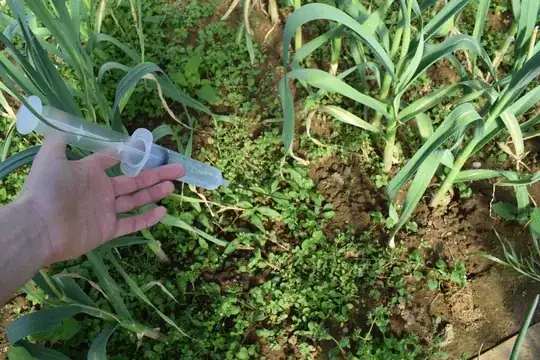I am facing an unusual problem. The soil concentration of heavy metal cadmium (Cd) in my garden is high. Getting cadmium out of the soil is a tricky and long term process, and the quick solution is to make it unavailable to plants by using zinc fertilizer. Plant roots do not know the difference between zinc and cadmium due to similar size of hydrated ions, and they uptake any of the two.
I was hoping I could save the garlic plants I am growing by applying a zinc fertilizer (ZnSO4). Unfortunately, zinc is immobile in soils and I don't think broadcasting it between the garlic rows would make it available to plant roots.
The alternative is to inject a solution of ZnSO4 directly into root system of the garlic plants using a syringe. The question is, what volume and concentration of Zn is large enough to make cadmium unavailable and at the same time is not toxic to the garlics?
Garlic cloves typical have 1-3mg of Zn per 100g, total soil concentration of Zn is 60mg/kg dry weight and total soil cadmium concentration is 4mg/kg dry weight. Any tips are welcomed. Even if you don't know the answer, please share your thoughts.
